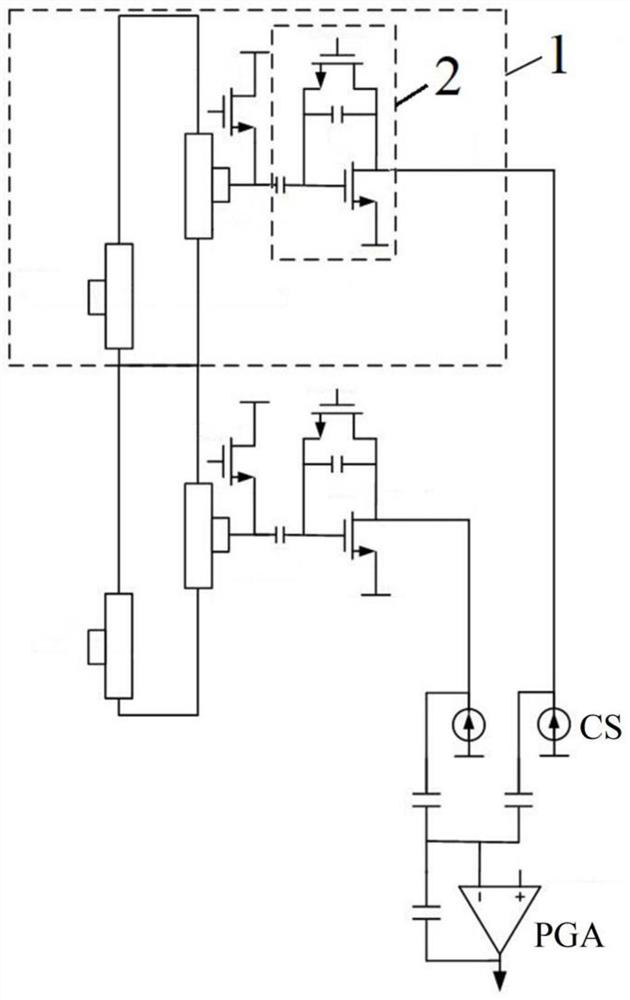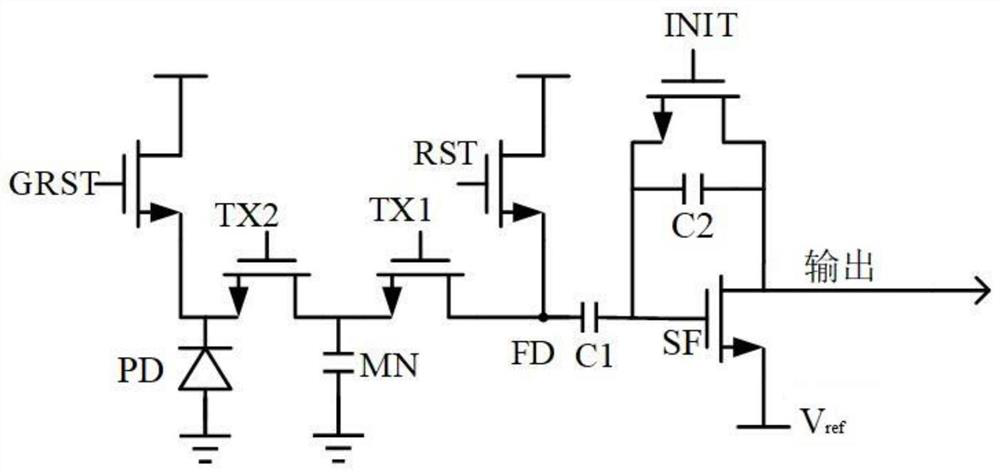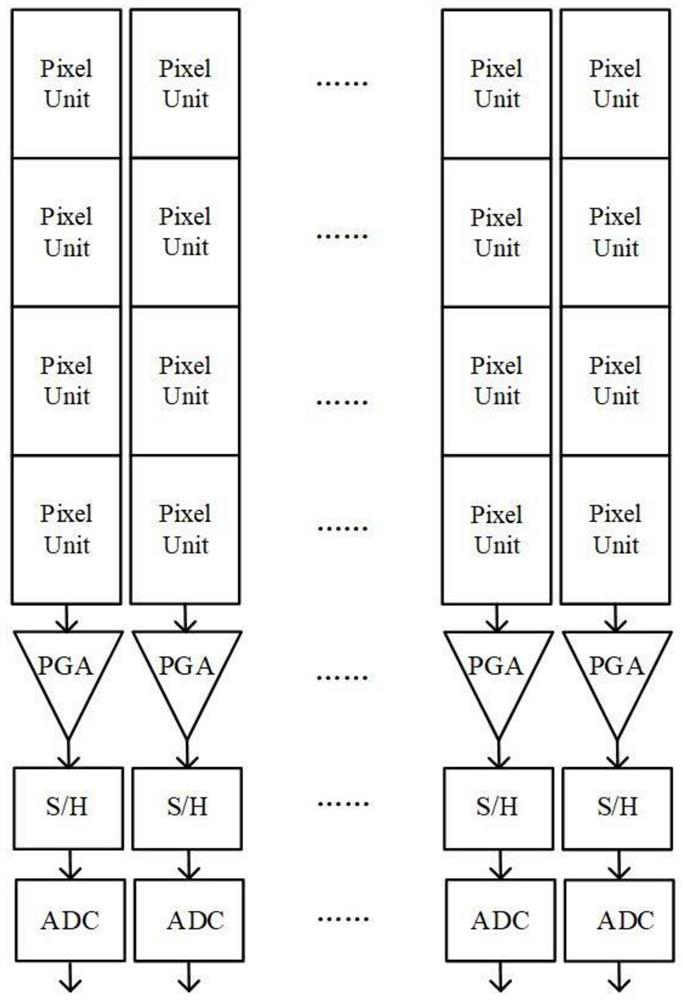Image sensor
An image sensor and pixel technology, applied in image communication, TV, color TV components, etc., can solve the problems of large CTIA noise, affecting imaging effect, reducing the signal-to-noise ratio of CMOS image sensors, etc., to reduce output noise, Effect of large full well capacity
- Summary
- Abstract
- Description
- Claims
- Application Information
AI Technical Summary
Problems solved by technology
Method used
Image
Examples
Embodiment Construction
[0021] In order to make the object, technical solution and advantages of the present invention clearer, the present invention will be further described in detail below in conjunction with the accompanying drawings and specific embodiments. It should be understood that the specific embodiments described here are only used to explain the present invention, but not to limit the present invention.
[0022] For traditional image sensors, a column of pixel units share one CTIA, resulting in too long a column bus, excessive parasitic capacitance at the input end of the CTIA, and excessive noise of the CTIA, which will reduce the signal-to-noise ratio of the CMOS image sensor and affect the imaging effect. In order to avoid the problem that the column bus is too long, the present invention adopts the method of controlling and driving the pixels in segments, and divides a pixel into several segments for driving. Each segment is equivalent to a sub-pixel unit, and each sub-pixel unit is ...
PUM
 Login to View More
Login to View More Abstract
Description
Claims
Application Information
 Login to View More
Login to View More - Generate Ideas
- Intellectual Property
- Life Sciences
- Materials
- Tech Scout
- Unparalleled Data Quality
- Higher Quality Content
- 60% Fewer Hallucinations
Browse by: Latest US Patents, China's latest patents, Technical Efficacy Thesaurus, Application Domain, Technology Topic, Popular Technical Reports.
© 2025 PatSnap. All rights reserved.Legal|Privacy policy|Modern Slavery Act Transparency Statement|Sitemap|About US| Contact US: help@patsnap.com



